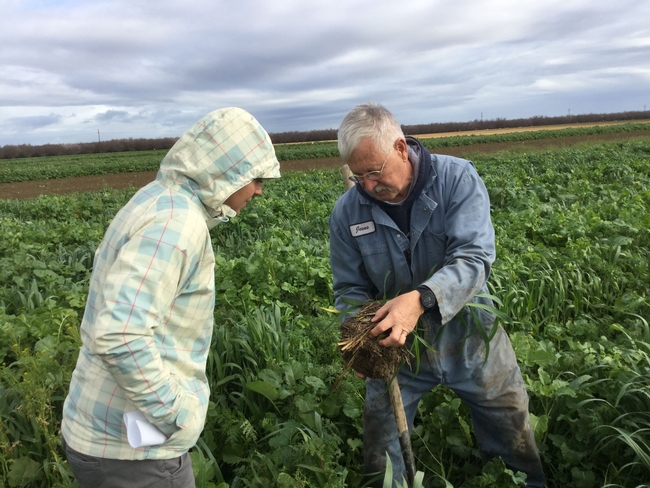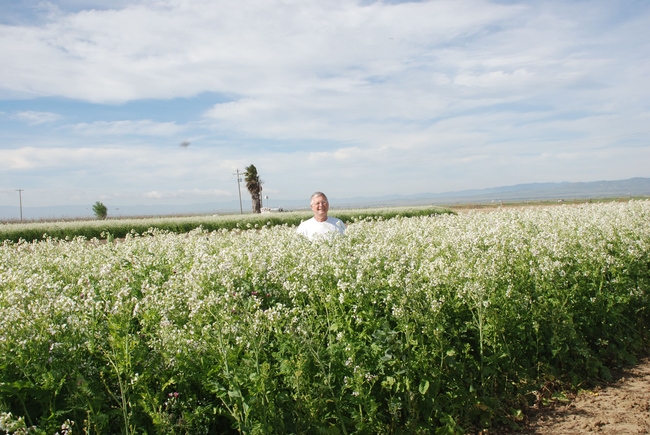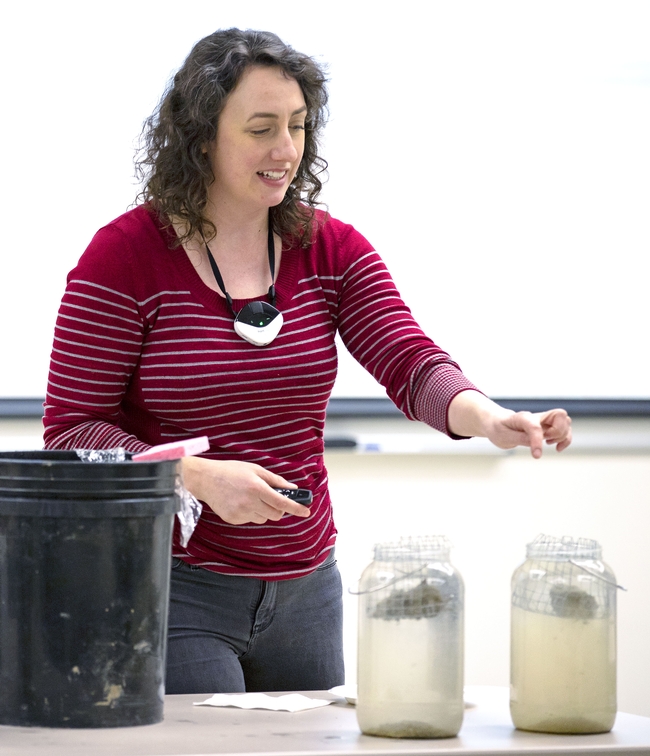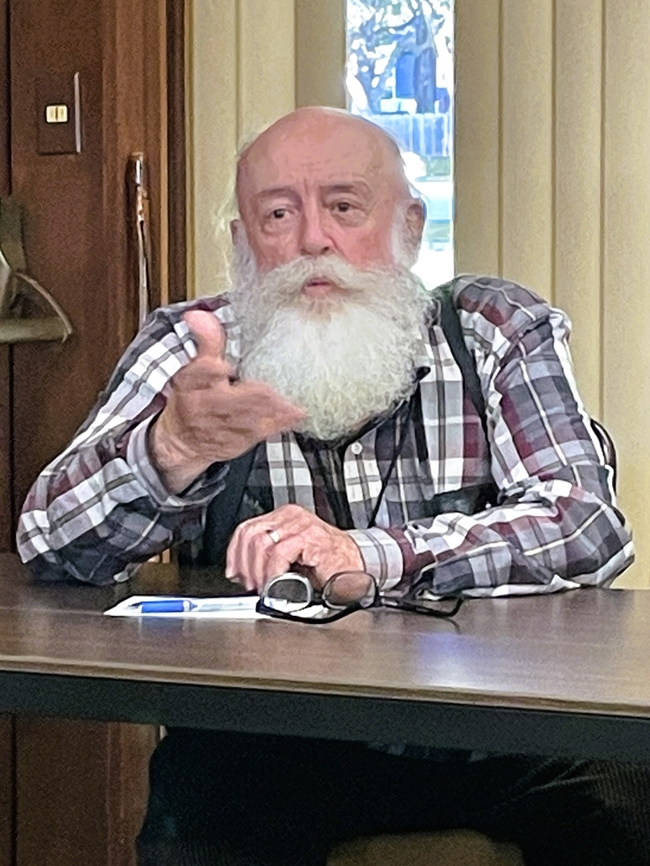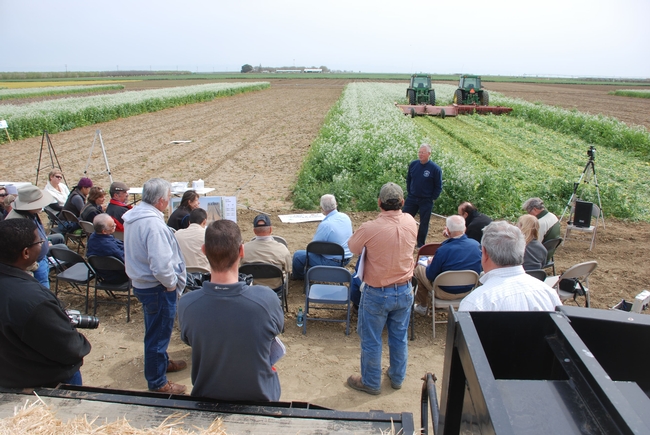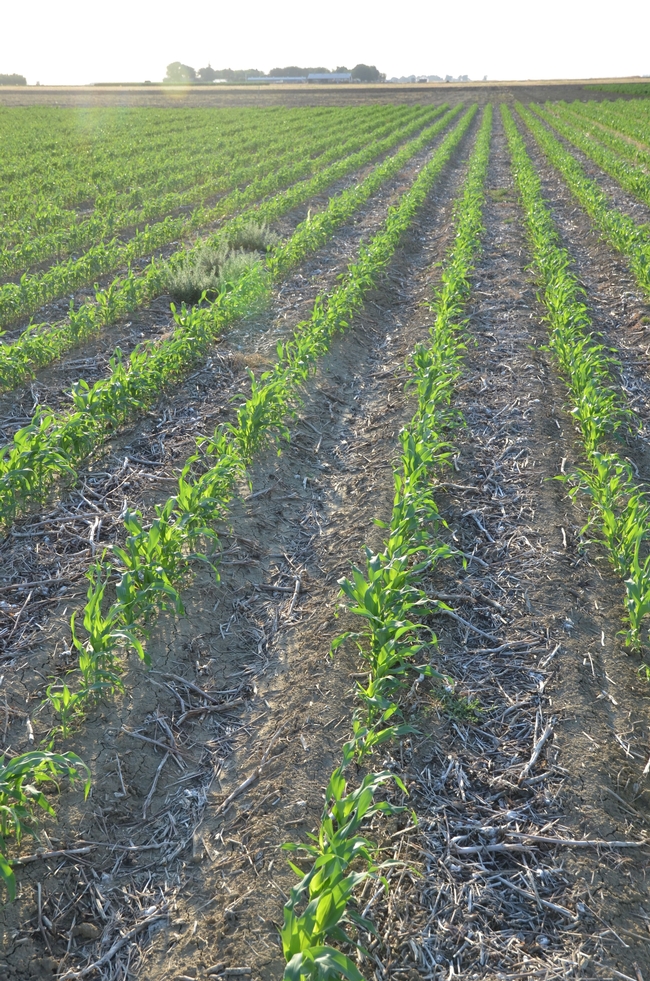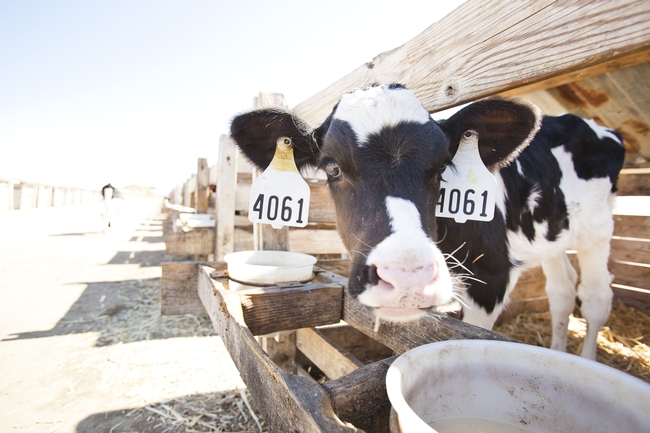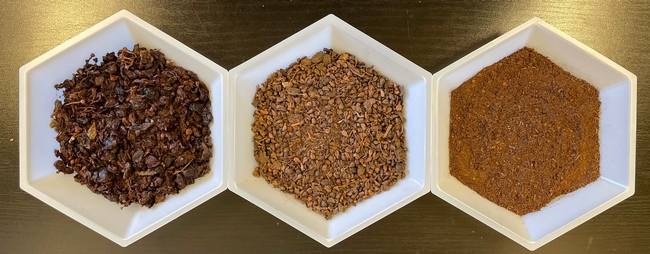Posts Tagged: innovation
Partners unveil first on-farm robotics incubators
Opening in Salinas and Merced in 2025, Reservoir Farms will drive ag innovations in automation robotics
The Reservoir, a nonprofit building tech incubators across California, and partners Western Growers Association, University of California Agriculture and Natural Resources, Merced College, Hartnell College and venture capital firm HawkTower have announced the creation of the first-ever on-farm robotics incubators, Reservoir Farms.
Unveiled during a press conference at the FIRA USA 2024 robotics conference in Woodland, Reservoir Farms are set to open in the Central and Salinas Valleys in early 2025. This pioneering initiative significantly shifts how agricultural technology innovates through real-world testing environments, world-class resources and critical industry partnerships.
California agriculture faces critical challenges, including labor availability and cost, import competition, increased regulation, water scarcity, and climate-related challenges, including extreme weather. These challenges have spurred significant advancements in agricultural precision, automation, mechanization, and robotics in recent years.
Despite advancements, early-stage agtech projects lack critical ecosystem support, like connecting directly with growers, testing and validating their solutions, and accessing dedicated shop space and farmland. These gaps hinder capital efficiency and the development of critical solutions that meet the agricultural sector's needs.
Initial projects at the incubators will focus on early-stage agricultural innovations in automation and robotics, including rovers and drones, that accelerate the development of breakthrough solutions to the opportunities and imperatives faced by California farms producing high-value specialty crops, such as labor shortages, profitability, and adopting climate-smart technologies.
Western Growers Association, a key advocate for advancing agricultural innovation, will provide financial and operational support as an anchor partner.
Anchor educational partners like UC ANR, Hartnell College, and Merced College will play a crucial role in innovation and workforce development, preparing the next generation of agricultural researchers, professionals, and innovators to drive the future of farming in California.
HawkTower, a venture capital firm investing in early-stage startups developing breakthrough innovations for California's environmental and industrial imperatives, is also an anchor partner.
“The launch of Reservoir Farms is a critical step forward in ensuring the future resilience of California's agriculture and across the Central Coast and Central Valley,” said Danny Bernstein, CEO of the Reservoir and managing partner of HawkTower. “By placing incubators directly on the farm, we enable innovators to test, iterate, and scale solutions in real-world conditions as a more immediate path to advance farming communities.”
A new model to incubate agtech innovation
The idea for Reservoir Farms emerged from extensive industry research and consultations with over 50 organizations in the specialty crop sector. Key insights uncovered critical gaps in startups' access to real-world testing environments, shop space, and direct relationships with growers – factors severely hindered capital efficiency and posed a formidable barrier to innovation.
“Our goal is to eliminate the friction points that have historically slowed down the development of new agtech solutions,” said Walt Duflock, senior vice president of innovation at Western Growers Association. “Reservoir Farms offers a new model, where startups can work side-by-side with growers to test their technologies, iterate in a low-stakes environment, and build scalable solutions to improve agriculture's operations.”
Initiative to support thriving agtech ecosystem and job creation
The Reservoir Farms initiative also reflects a broad-based collaboration between key educational institutions, industry players, and local communities to ensure the next generation of agricultural professionals is equipped with the skills needed to support the region's growing agtech sector.
Supporting partners include Central Coast Small Business Development Center (SBDC), Communities Organized for Relational Power in Action (COPA), Digital NEST, Farmhand Ventures, Merced County Farm Bureau, Milano Technical Group, Monterey Bay DART (Drone Automation & Robotics Technology), Monterey Bay Economic Partnership, Monterey County Farm Bureau, Tesserakt Ventures, and The VINE.
“As robotics and automation become more integral to California agriculture, it's essential to have facilities like Reservoir Farms embedded within the farming community,” said Gabriel Youtsey, chief innovation officer at UC ANR. “By bridging the gap between lab-based research and real-world application and accelerating tech transfer, Reservoir Farms can help build the workforce and technology needed to address the critical challenges on the farm, from labor shortages to climate change.”
Focus on specialized services and real-world testing in California's agricultural heartland
Reservoir Farms will open its first two locations in Salinas Valley and Merced in the first quarter of 2025. Participants can lease testing fields and shop space without the burden of multi-year leases, giving them the flexibility needed to scale. The incubators will offer fully equipped R&D workshops, secure storage for expensive equipment, and customized, pre-planted specialty crop fields for testing.
These facilities will be complemented by Reservoir Farms' co-working spaces, meeting rooms, and a robust demo day schedule designed to connect startups with growers, investors, and other key stakeholders.
In addition, the Western Growers Association's validation process will provide startups with a quantitative “scorecard” that offers crucial metrics on scalability, efficacy, and financial viability. This validation, combined with UC ANR's field testing, will help startups refine their products and receive a critical stamp of approval that builds trust with growers and ensures a smoother path to commercialization.
Media Contact:
Jennifer Goldston
AgTech PR for the Reservoir
816-260-0040
jennifer@agtechpr.com
UC food-safety specialist tests biosensors to ensure safe produce
Ahmed El-Moghazy joined UC Agriculture and Natural Resources as a UC Cooperative Extension food safety specialist in February and is based at UC Riverside. Food safety, according to El-Moghazy, are measures that ensure food is free from harmful contaminants, prevent foodborne illnesses and is safe to eat. El-Moghazy is responsible for assisting California farmers and food processing facilities to enhance food safety practices by training appropriate personnel and addressing food-safety issues on their farms.
As the principal investigator for the 2-SAFE Lab at UC Riverside, El-Moghazy is investigating the accuracy and applicability of point-of-use biosensor technology. The small, lightweight and easy-to-use sensor can be used while out in the field or in a packing house to test contamination of liquids such as irrigation and washing water or solids like food samples.
Testing for foodborne pathogens traditionally takes two to three days and the process can be costly. The biosensor technology that El-Moghazy is using is inexpensive and can provide results within one work shift, which allows businesses that grow fresh produce to confirm the safety of their products before sending them to the market.
The alternative, selling contaminated food to consumers, is not only detrimental to human health, but can ruin the reputation of businesses, making way for unanticipated costs associated with recalling contaminated products and regulatory consequences including fines and sanctions.
El-Moghazy is also developing the next generation of antimicrobial surface coatings and materials that can rapidly control the foodborne pathogens and hinder the transfer of harmful bacteria from contaminated food to non-contaminated food.
El-Moghazy is optimistic that his research can safeguard public health, reduce the burden of foodborne illness and protect the integrity of businesses. Although El-Moghazy serves the entire state, he is dedicating a large part of his needs assessment and efforts in Southern California where high-value specialty crops such as avocados and citrus are grown.
"Did you know that one in every six Americans get sick from eating food contaminated with a foodborne pathogen?" asked El-Moghazy. Understanding the fatality of foodborne illnesses, El-Moghazy believes that increasing awareness through education is an essential aspect of his role. "It's true, but not many people realize this, or that 40% of foodborne illnesses stem from fresh produce."
To protect consumers, the U.S. Food and Drug Administration requires farms with a certain level of annual sales (adjusted for inflation) of fruits and vegetables typically consumed raw to have one employee who has completed an FDA-approved Produce Safety Rule Grower Training.
In addition to certified trainings, El-Moghazy offers technical assistance to ensure growers comply before and after inspections, as well as resources for several topics including produce safety, agriculture water, flooding, soil amendments, worker health, hygiene and training and postharvest handling and sanitation. He can also assist in developing food-safety plans and other general farm food-safety protocols. His technical expertise covers all aspects of food production and supply including irrigation water quality, hygiene of harvesting tools and transportation.
Before joining ANR, El-Moghazy completed two years as a visiting scholar in the UC Davis Biological and Agricultural Engineering department before continuing as a postdoctoral fellow in the UC Davis Food Science and Technology department for 5 years. Much of his work was rooted in the development of biosensors and antimicrobial materials for food safety. While in Davis, he collaborated with local farms and food processing companies on food safety research and extension.
El-Moghazy earned a Ph.D. studying developmental biosensors for food safety applications to detect pesticides residues from a joint program offered by University of Perpignan in France and Alexandria University in Egypt. He also earned a master's degree in developmental biobased fungicides and a bachelor's in agriculture science from Alexandria University. Finally, he completed a fellowship at the Institute of Plant Protection, Szent Istvan University in Hungary, where he studied how to extend shelf-life of fresh produce using biomaterials.
El-Moghazy is based at UC Riverside in the Department of Microbiology and Plant Pathology. He can be reached at aelmogha@ucr.edu or (951) 827-0257.
Postharvest Center: New research focus and outreach
Still providing the world with top-notch information
UC Davis has been a leading source of information for people handling, packaging and transporting crops since the beginnings of the Postharvest Research and Extension Center in 1979. Now, the center is strengthening its focus on the needs of industry, offering fresh courses, weaving strategic partnerships and expanding into digital media, all while building up its research capacity to better serve the needs of the produce industry.
“We're asking people in the industry, ‘How can we support you? How can we better listen to you?' We want people to know we're not disconnected know-it-alls,” said new center co-director Bárbara Blanco-Ulate, an associate professor in the UC Davis Department of Plant Sciences. “We're getting more faculty involvement, people with expertise in related fields such as quality engineering and safety, as well as bringing in emeriti faculty and people from around California. We're forming partnerships with organizations around the world, and we've opened up to people from other institutions around the country.”
“The larger the network, the more things we can do,” added fellow co-director Irwin R. Donis-Gonzalez, an associate professor of UC Cooperative Extension in the Department of Biological and Agricultural Engineering.
The foundation: Expanded research
The new co-directors will beef up the center's applied science component with the hiring of a research specialist. They aim to provide new information that can be used industry-wide as companies explore new ways to handle and store fresh produce.
“We're building the capacity to respond to industry requests for research,” Blanco-Ulate said.
New courses, national reach
Their first workshop, held recently, demonstrates the center's renewed vision and commitment to broad networking: The Agricultural Water Systems Workshop addressed current concerns around water management and risks to food safety. Partners in the course included the Western Growers Association, the University of Arizona, the University of Florida and Salinas-based Taylor Fresh Foods, Inc.
Courses given over the past several years that have been recorded will be posted to the center's new, online video library and to the center's YouTube channel.
“People can watch those courses for free,” Blanco-Ulate said. In addition, new courses will be offered in-person and hybrid.
The co-directors are working with the University of California to offer continuing and professional education credits to course participants.
Online resources – many for free!
The center's website features a database with scores of free product fact sheets, which are downloaded by users around the world. The fact sheets are so highly regarded that they are considered expert evidence in legal proceedings, Blanco-Ulate said. Visitors to the website can also find links to research papers published by UC Davis faculty, including seminal works by Adel Kader, who founded the center.
Books are offered through the center's online bookstore and include titles through UC Agriculture and Natural Resources. Ten new titles are being planned, including topic-specific updates taken from previous classics.
Debunking myths: Ethylene
A new newsletter deals with a new problem: Misinformation about food and food handling that spreads through social media. One example is the use of ethylene to ripen produce such as bananas, so that they can be safely stored until ready for the consumer.
“Ethylene is safe for humans and does not leave any harmful residue on produce,” Donis-Gonzalez wrote in the center's latest newsletter. Even better news, he added: The levels of ethylene used on food are a tiny fraction of the concentrations that would be needed to create an explosion, one of the false alarms being raised in social media.
Evolving with the times
After 47 years of service, these and more updates will keep the center at the forefront of an evolving postharvest world. The top goal: Meet the needs of agriculturalists, industry and consumers.
“We are adapting to new needs, with both the resources and the workshop we're offering,” Donis-Gonzalez said.
“As a land-grant institution, we take our outreach mission seriously,” Blanco-Ulate added.
Related links
More about the UC Davis Postharvest Research and Extension Center.
This story first appeared on the UC Davis Department of Plant Sciences site.
West Side REC study: A cradle of California regenerative agriculture
In 20-year study, UCCE specialist Mitchell, colleagues, growers advance no-till and cover cropping practices
In the 1990s, long before “regenerative agriculture” was a buzzword and “soil health” became a cause célèbre, a young graduate student named Jeff Mitchell first learned about similar concepts during an agronomy meeting in the Deep South.
Mitchell was astonished to hear a long list of benefits attributed to practices known internationally as “conservation agriculture” – eliminating or reducing tillage, cover cropping and preserving surface residues (the plant debris left after harvest). Potential positive impacts include decreasing dust in the air, saving farmers money on fuel and equipment maintenance, improving soil vitality and water dynamics and a host of other ecosystem services.
“All of these things start adding up and you kind of scratch your head and say, ‘Well, maybe we ought to try some of this,'” recalled Mitchell, who became a University of California Cooperative Extension cropping systems specialist at UC Davis in 1994.
In 1998, Mitchell launched a long-term study of those practices at the West Side Research and Extension Center (REC) in Five Points, Fresno County. “We started this because, way back when I first began my job, nobody was doing this,” he explained. “This was brand-new, uncharted territory for California.”
For the next 20 years, Mitchell and his colleagues studied changes to the soil and ecosystem, learned from their failures and successes, and shared those hard-won lessons with fellow scientists and farmers across the state. A summary of their findings was recently published in the journal California Agriculture.
Conservation agriculture in California: ‘No trivial undertaking'
Mitchell and the Conservation Agriculture Systems Innovation Workgroup – a network established in 1998 comprising farmers, researchers, public agency personnel and members of private entities and environmental groups – started with a virtually blank slate. According to Mitchell, surveys at the beginning of the 21st century found that conservation agriculture practices were used on less than one-half of 1% of annual crop acreage in California.
Although no-till is common in the Midwest and Southeast of the U.S. and across wide swaths of the globe, it was almost unheard of in the Golden State. With the development of irrigation infrastructure in the 1920s, California farmers saw continually phenomenal growth in yield over the last century – and thus had little incentive to deviate from tried-and-true methods that relied on regular tillage.
Nevertheless, intrigued by the potential benefits of conservation agriculture, Mitchell wanted to see which of those practices could be feasibly applied to California cropping systems. During the 20-year study at West Side REC, the researchers grew a rotation of cotton-tomato, followed by a rotation of garbanzo, melons, and sorghum, and finally tomatoes.
But at first, it was a struggle to grow anything at all – as they had to master the basics of how to establish the plants in a no-till, high-residue system.
“This was no trivial undertaking,” Mitchell said. “Early on we struggled – we failed the first couple of years because we didn't know the planting techniques and we had to learn those. There was an upfront, very steep learning curve that we had to manage and overcome.”
Then there was the long wait to see any measurable improvements to soil health indicators, such as the amount carbon in the soil.
“For the first eight years, we didn't see any changes whatsoever,” Mitchell said. “But then they became strikingly different, between the no-till cover crop system and the conventional field without cover crops, and the divergence between those two systems became even starker.”
The two-decade time horizon for the West Side REC study is one major reason why it has been so valuable for growers and scientists alike.
“It's so hard to capture measurable changes in soil health and soil function metrics through research because those changes are really slow,” said Sarah Light, UCCE agronomy farm advisor for Sutter, Yuba and Colusa counties and a co-author of the recent California Agriculture paper. “Often in the course of a three-year grant you don't actually get statistically significant differences.”
Reaching, teaching and learning from farmers
The study site on the west side of the San Joaquin Valley also has been a vital teaching resource. Even though Light works with farmers in the Sacramento Valley, she has conveyed findings from that research with her clientele and uses soil samples from the site to vividly illustrate a significant benefit of conservation agriculture practices.
In one demonstration, she drops soil aggregates – which look like clumps of soil – into two containers of water. One clump, from heavily tilled land, falls apart quickly and the water becomes dark and murky. The other, comprised of soil that has been no-till and cover cropped for 20 years, holds together – a sign of healthy, resilient soil – and the water remains relatively clear.
“It's a really simple demo, but it's very effective because it shows how easily soil aggregates break apart with water – or not,” Light said.
That aggregate stability is a key factor in soil's ability to both move water (infiltration) and hold onto water (retention). Those dynamics are crucial for farmers to avoid ponding in their fields, preserve water for drier months, and generally endure the flood/drought whiplash of climate change.
Over the years, Mitchell has hosted thousands of visitors at the West Side REC study site to showcase the potential benefits of adopting soil-health management practices.
“I don't think I'm exaggerating in saying that this is probably the most-visited agricultural field station project in the history of UC ANR (UC Agriculture and Natural Resources),” he said.
Both the West Side REC – and Mitchell himself – are greatly valued by the local grower community.
“Jeff is a microcosm of the university's applied research on the West Side of the San Joaquin Valley,” said John Diener, who grows almonds, fresh market garlic, canning tomatoes, cotton, masa corn and wheat for production and seed on land adjacent to the field station.
Growers adopt, adapt and adjust practices
Tom Willey, a retired farmer and longtime collaborator with Mitchell, has actively encouraged peers to visit the Five Points site – especially in the early years.
“It was very innovative and there weren't many examples of that anywhere in the state,” Willey said. “So, I helped encourage people to go out there and learn and possibly think about doing similar work on their own farms.”
Willey himself was a pioneer in experimenting with no-till practices in organic vegetable cropping systems.
“As organic farmers, we were probably more tillage dependent than conventional farmers because it was the only method we had for weed control; we weren't able to use herbicides,” Willey said.
Despite early struggles, he persisted in trying different techniques and mechanical means of weeding. And Willey later partnered with a group of progressive vegetable growers and UC and California State University Chico personnel to secure a Conservation Innovation Grant from the Natural Resources Conservation Service to support more on-farm trials and share their experiences.
In the end, however, no-till proved too risky to continue, given the losses they incurred. One tricky issue is nutrient cycling. The organic growers found that after mowing down a cover crop and spreading compost, leaving those nutrients on the surface without incorporating into the soil through more vigorous tilling (or adding synthetic fertilizers, as conventional growers could do) results in lower yields. In the short term, farmers simply did not see yields that could sustain their operation.
“It's very difficult in vegetable systems, and particularly difficult in organic vegetable systems,” Willey said. “I would say a number of us have learned to diminish the over-reliance that we had on tillage, but not to completely eliminate it.”
Cover cropping is also a challenge for some farmers, with certain cover crops making a perfect haven for devastating pests such as lygus bugs and stink bugs, according to Diener.
“We do everything we can to eliminate the host crop from which they come, so why am I going to bring the enemies to my house?” he said. “It's about making enough money to be there next year. You're not going to be there next year with these pests. It's just not a practical management option, in light of our significant pest pressure and disease hosts for our crops of value.”
Instead of planting cover crops, Diener said he opts for mixing in grain crops that can similarly contribute to soil health – while generating revenue at the same time. According to Diener, a longtime collaborator with Mitchell, the best way to adopt conservation agriculture practices is to tailor them to specific localities and each grower's circumstances. And in his corner of the San Joaquin Valley, that means not following the template of the high-precipitation, no-till systems found in the Midwest.
“We've adapted Jeff's principles to our program; it won't look like Iowa to you, which is what everybody comes to expect to see. It ain't how it works, folks,” Diener said. “It's a different methodology. We do those things that fit our environment and that's why that West Side field station is important – because it's our environment.”
Promoting and enhancing soil health, one step at a time
More widespread adoption of soil-health management practices can be driven by a variety of factors. With the rise of drip irrigation in tomatoes, for example, more growers began using no-till or reduced till to minimize disruptions to the delicate driptape in their fields.
And, according to Mitchell, the dramatic increase in no-till practices in dairy silage production – from less than 1% to over 40% – was the result of entrepreneurial efforts by a small but extraordinarily dedicated group from the private sector that worked with farmers, one by one.
Because optimizing these practices requires close and intensive attention – and no small amount of courage and gumption – Mitchell and Light understand that growers might need to take an incremental approach. Even one fewer pass over the field, or cover cropping every other year, can provide some benefit for soil health, Light said.
“The value is that when you can prove the concept, then you can motivate every step of the way,” Light explained. “Jeff is showing the shining light of the goalposts, and that can motivate us to take every challenging step along the way.”
Shannon Cappellazzi, who helped with the data analysis on the recently published California Agriculture paper, agrees that there is value in taking a stepwise approach in building soil health.
Cappellazzi was the lead project scientist on the Soil Health Institute's North American Project to Evaluate Soil Health Measurements, which looked at 124 different long-term soil research sites across the continent – including the Five Points site.
After analyzing 2,000 samples from the various study sites, Cappellazzi said the evidence suggests that layering on each component of a conservation agriculture program – doing no-till, adding cover crops and then integrating livestock, for example – can have additive, cumulative benefits for soil health.
“I think having the data to show the long-term benefit makes people willing to do the short-term change, even if it's a little bit hard for a couple years,” Cappellazzi said.
The research at the West Side REC also produced another key takeaway.
“To me, what really stood out was that for most of the soil health indicators, cover crops had a huge impact. Both the cover crops that had no till – and the cover crops that had standard tillage – had considerably higher carbon and soil health indicator measurements than those without cover crops,” said Cappellazzi. She added that the data also indicated improvements in how the water moved into the soil, and how the soil held that water.
Vital research drives an enduring legacy
Water management and conservation, of course, will be paramount in California's increasingly volatile climate reality. Mitchell's Five Points research – and related studies across the San Joaquin Valley by UC Davis agroecologist Amélie Gaudin and others – contributed data that overturned a long-held belief about winter cover cropping.
“There's a lot of preconceived ideas about cover crop water use,” Mitchell said. “One of the things that we learned was that compared to bare soil water loss in the wintertime, cover crop water loss during that same growing period – from about November through March – tends to be almost a wash.”
That crucial finding provided researchers and soil health advocates with invaluable evidence to preserve the practice as an option for farmers.
“They've needed to go around and give a dog-and-pony show to a lot of Groundwater Sustainability Agencies (GSA) that had been on the brink of banning the growing of cover crops because the perception out there is that they use a lot of water,” said Willey, the retired vegetable grower. “But over the winter months, cover crops don't use a lot of water. In fact, they may not use any net water at all.”
The young researchers who studied cover-crop water use represent another important legacy of the Five Points study site. It has been an experiential training ground for many of the next generation of soil scientists, agronomists and ecologists.
“The number of students who have been trained by and through this study has been really phenomenal,” said Mitchell, noting that they have worked on topics ranging from air quality to soil carbon related to no-till and cover cropping.
Their contributions will be essential in continuing to refine and optimize these practices that are fundamental to conservation agriculture. On Diener's concerns about lygus bugs and stink bugs, for example, Cappellazzi – in her new role as director of research at GO Seed – is studying and breeding cover crops with an eye on characteristics that make for less hospitable habitats for certain pests.
Indeed, while the California Agriculture paper effectively wraps up the 20-year study at Five Points, its lessons will continue to resonate and inspire for years to come.
“This is a step in a long journey,” Light said. “It's a launchpad – this paper might be able to tie a bow on it in terms of the data collection, but in terms of the extension impact, this is really just the beginning.”
And for Willey, the omnipresent climate crisis compels the entire sector to pick up the pace along that journey.
“We've got a lot of pressure now to evolve agriculture very rapidly in response to climate change and I don't think we can sit around and twiddle our thumbs,” he said. “We know the directions we need to be heading – with more natural systems mimicry and less reliance on toxic inputs and synthetic fertilizers – and we need to figure out how to incentivize and support farmers in moving in those directions.”
Grape seeds, stems and skins can reduce dairy cattle emissions
Low-cost wine industry additive also improved feed efficiency and milk quality
Researchers at University of California, Davis, added fresh grape pomace left over from winemaking operations to alfalfa-based feed for dairy cows and found that methane emissions were reduced by 10% to 11%.
The preliminary findings could offer a low-cost sustainable pathway for vineyards to reduce waste while helping dairy operations maintain quality while cutting back on emissions of methane, which is a powerful greenhouse gas.
“This is the first time anybody has shown that this can work in California,” said Ermias Kebreab, an animal science professor and associate dean of global engagement at UC Davis. “You're reducing emissions, you're improving the quality and it may also reduce the cost of production.”
The pilot research project, which will be detailed in a paper later this year, also found that mixing in grape pomace improved feed efficiency and increased healthful fats, said Selina Wang, an associate professor of Cooperative Extension in small scale fruit and vegetable processing.
“We found that the feed with the additive of grape pomace changed the fatty acid composition of the milk and, in particular, increased the polyunsaturated fats, which are the main fats in grape pomace,” Wang said. “This suggests that supplementing the feed with an optimal fatty acid profile may have positive impact on the fatty acid profile of the milk and increase their health benefits.”
Symbiotic commodities?
In 2022, California was the leading dairy producer in the country, generating $10.40 billion in sales, while 90% of wine production came from the Golden State, with a market value of $5.54 billion.
Processing grapes for wine generates thousands of tons of waste in the form of grape pomace, which consists of leftover seeds, skins and stems. Dairy and livestock are responsible for more than half of the state's methane emissions, owed largely to cow burps.
They are the top two agricultural commodities in California, according to state production statistics, and reducing waste and emissions for both industries are key to the state meeting its climate goals.
Tannins for emission reductions
Wine grapes are high in fats and tannin, which is known to reduce methane emissions, so Kebreab sought to test if adding grape pomace to feed could have a positive effect while not adversely affecting production.
“It's a byproduct that's not being used much,” he said. “This is something that can be included in our efforts to try to reduce emissions.”
A mix of feed options
To do the research, scientists worked with Holstein dairy cows and gave the animals feed consisting of alfalfa, wheat, almond hulls, cottonseed and grain. After two weeks, the cows were split into three groups: A control group with no change in diet, another where the feed combination included 10% grape pomace and a third that received 15% grape pomace.
Every four weeks, the cow groups would change feed combinations.
They were fed twice daily by postdoctoral students and interns, and emissions were monitored daily. Milk production was documented in the morning and evening and milk samples were collected weekly to analyze for fat, protein, lactose and other measurements, which showed no differences between the control and other groups.
Methane and hydrogen emissions were reduced compared with the control group, suggesting that grape pomace reduced enteric emissions without affecting production.
“I think the dairy industry will be very interested in this,” Kebreab said. “Sometimes when you're using additives, they have palatability issues. With grape pomace, they absolutely love it.”
Next on the list is a trial with olive pomace and working to understand the mechanism that reduces emissions. “If we have a better understanding of the mechanisms, we can select the feed additive or a mix of feed additives to reduce dairy cattle emissions and make dairy milk healthier while making use of the agriculture byproducts,” Wang said. “There's a lot of room to grow in this space and we're excited about this work.”
The research was supported by the California Dairy Research Foundation.
This article was first published on the UC Davis news site.









